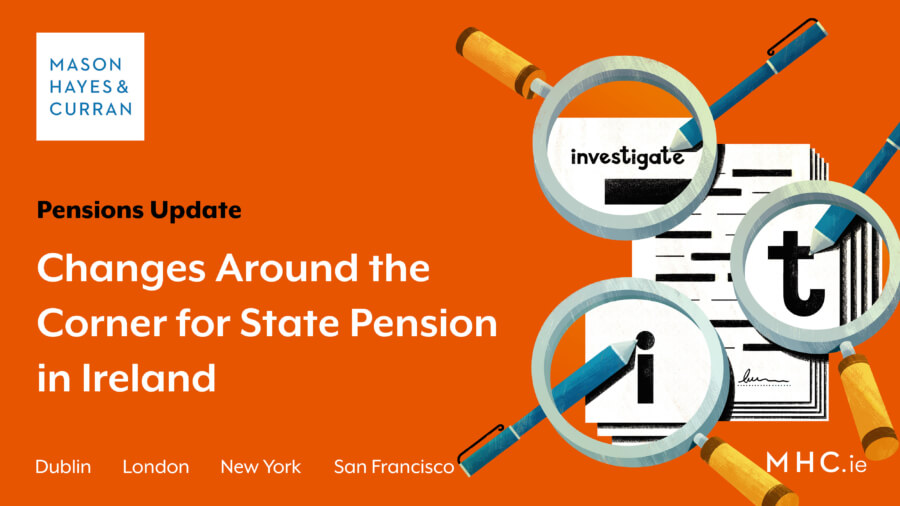Changes Around the Corner for State Pension in Ireland

The measures recently approved by the Cabinet amount to a substantive change to the State Pension System. Perhaps the most eye-catching of these measures is the retention of 66 as the State Pension Age. This flies in the face of suggestions from the Pensions Commission which argued strongly for an increase in the age at which people become entitled to the State Pension.
Key changes
To counter the effects of the retention of a qualifying age of 66, a new “flexible” system is to be introduced, which is already in place in some other countries, including Estonia. This will give people the choice to work until 70 in return for a higher state pension. These and other key changes are summarised below:
- Maintenance of the state pension age at 66.
- From January 2024, people will have the option to continue working up until the age of 70 in return for a higher pension.
- Calculation of individual pension entitlements will transition fully to a “Total Contributions Approach” on a phased basis.
- Enhanced state pension provision for long term-carers. This means that people who have given up work over a long duration of time to look after a loved one will have this time recognised in the pension system for the first time.
- The Department of Enterprise, Trade and Employment will introduce measures that allow, but do not compel, an employee to stay in employment until the State Pension age.
- Workers will be provided with access to a PRSI contribution statement service each year. This will be provided in a manner that facilitates understanding of entitlements.
- The long-term sustainability of the State Pension system will be funded by incremental increases in social insurance rates.
- The level and rate of increase in social insurance rates will be determined on a structured basis every 5 years, informed by the outcome of a statutory actuarial review.
- Commitment to explore the design of a scheme that would modify the current Benefit Payment for 65-year-olds to provide a benefit payment for people who, following a long working life (40 years or more), are not in a position to remain working in their early 60s.
The current state pension is paid at the rate of €253 per week for people who retire at 66. The “flexible” model will see increases in those rates being applied depending upon the actual age at which an individual commences to be in receipt of the State Pension.
Fair approach
The plan has been praised in certain quarters as it will facilitate those who are willing and able to work beyond the age 65, while also maintaining the pension qualifying age at 66 for people who want to retire. This would appear to be a fairer approach than a simple blanket increase on the pension age, or a “one size fits all” model.
Funding
As regards the funding of this modified pension system, Ms Humphreys stated that the original €1 billion deficit in the social insurance fund that had been forecast by the end of 2022 has been revised to close to a €3 billion surplus. Despite this, Ms Humphreys stated there would still be a need for PRSI contributions to increase, but that this would be done on an incremental basis. In response to a report from the Irish Fiscal Advisory Council which predicted that someone earning €50,000 would have to pay an additional €1,200 in PRSI to fund this, Ms. Humphreys advised that any increases would be “modest” and introduced gradually.
PRSI increase
The suggested increase in PRSI seems to ignore the fact that the State will be making a saving as people will not be drawing down their State Pension until a later age and, presumably, such individuals will continue to be paying taxes linked to their income.
It could have been assumed that the changes largely pay for themselves, but the mooted increases in PRSI point to a system that is strained and in desperate need of additional finance. The introduction of a flexible model of payment is certainly something to be welcomed but concerns over the financial sustainability of the State Pension remain unresolved.
For more information, please contact a member of our Pensions team.
The content of this article is provided for information purposes only and does not constitute legal or other advice.
Share this:





